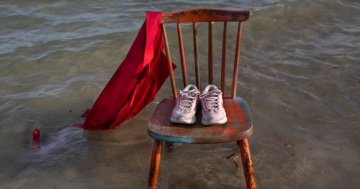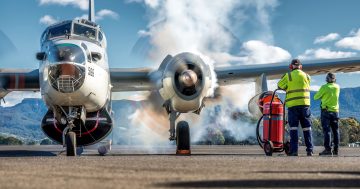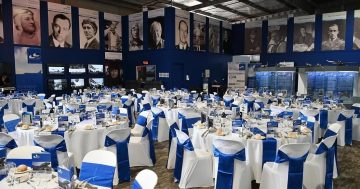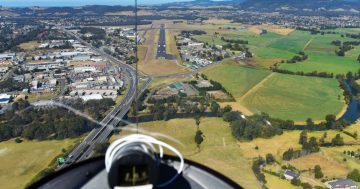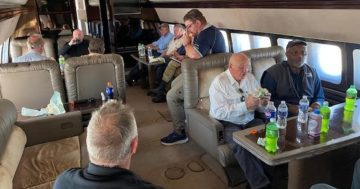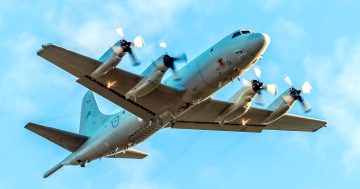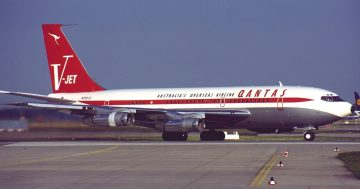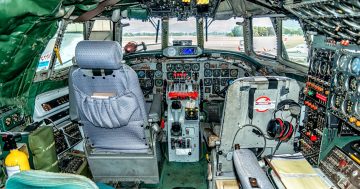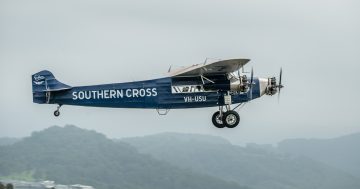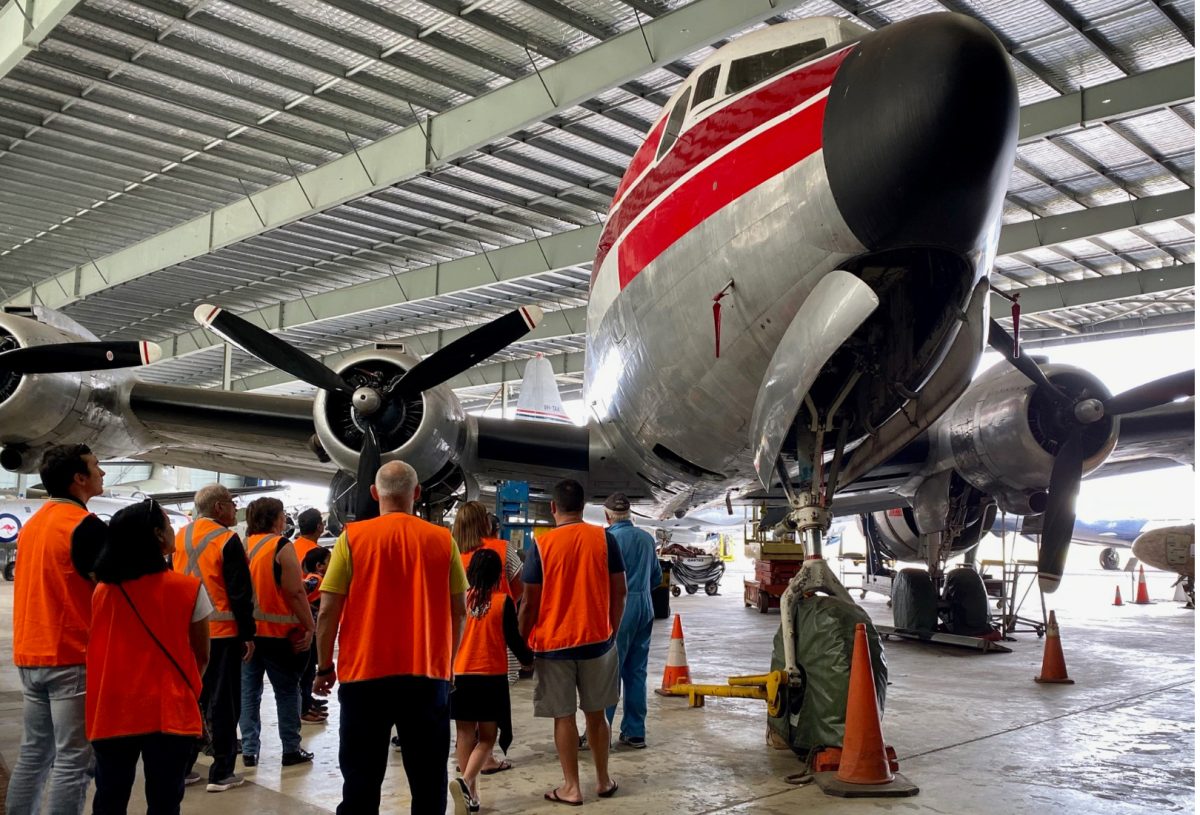
Visitors on a HARS tour look at the DC-4. Being a tour guide is one of the ways HARS members can get involved with the not-for-profit organisation. Photo: Mark Mennie.
As you walk through the Historical Aircraft Restoration Society (HARS) Aviation Museum at Albion Park, it’s abuzz with aviation professionals and enthusiasts donating their experience and skills to the aircraft and its history.
However, for these HARS volunteers, it’s become about more than just maintaining or restoring aeroplanes, but also a support group for members and their spouses long after they have moved on from active involvement with heavy aircraft.
HARS media and marketing team coordinator Ian Badham said it was a great outlet for those who had worked with airlines, in general aviation or with Defence who might have been engineers, pilots or in support roles.
“They’ve worked all or some of their career in the industry and now they’re finished,” Ian said.
“This is an opportunity for them to continue to be involved in a field that they’re very passionate about in a worthwhile way and in a way that otherwise wouldn’t really be possible.”
Ian said since the not-for-profit organisation was formed in 1979 by a group of aviation enthusiasts interested in preserving Australian aviation history, it had become an important steppingstone for many members and a way to connect with likeminded people.
“Otherwise, you retire, what are you going to do?” he said.
“You’re going to join Probus and have some interesting tours. That’s nice. You’re going to look after the garden. That’s nice. Play a bit of golf. That’s nice.
“But here, you continue something that’s been your professional engagement for all or part of your working life.
“It’s something that you’re interested in and there’s a whole new dimension to it here – the aspect of it that you were never involved in watching before, whether you were running a reservation system in an airline or whether you’re a mechanical engineer working on engines.
“You can get involved in anything you want here, because each aircraft has its own history, its own personality, so each has the same small group to look after it.”
He said this was made possible due to the nature of HARS itself.
“Most aviation museums – and I’ve been to some beautiful ones around the world – they’re all very polished,” he said.
“All the aeroplanes are beautifully polished and all behind ropes – you don’t touch them and they never move.
“Whereas here, where possible, we keep them operating.
“About a third of our aircraft here actually fly, which is highly unusual for a museum, and we like the experience of people interacting with them.
“I’m a regular tour guide here, and I make sure if there’s kids in the group, like last Saturday, I had seven adults and three kids, and I said: ‘Right, adults, if you really want a formal, technical tour, go with somebody else’.
“You structure the tour around getting them onto everything that they possibly can and touching it when they can.”
Patrons can jump in a Bell helicopter, wave out the window of the C47 Dakota from the seat once sat in by Queen Elizabeth II on her royal tour in 1954 or sit in the cockpit of varying aircraft.
“I think that as far as museums go, it’s different and that’s really what’s so special here,” he said.
“That’s one of the things, as a tour guide you actually have fun.”
There are now 800 HARS members, 200 of whom are signed on to do tours and 60 who regularly conduct the tours.
“It’s not just a men’s shed,” he said.
“Joan De La Hunty, (president) Bob’s wife, works in the cafe. The cafe is all volunteers.
“It’s just grown, because of the passion, because of the professionalism of what they do with the aircraft, it’s attracted more and more people.
“We’re always after more people who want to get engaged, who want to be hands-on and help do the restoration, or hands-on and take people around, or hands-on up at the library.”
Upstairs in the HARS building is a massive library, which has been built up over the years and often receives requests from people around the world seeking aircraft blueprints or manuals.
“Part of it was that our vice president, Maureen Massey, was a very senior engineer at de Havilland at Bankstown,” he said.
De Havilland, which built aircraft and was later taken over by Boeing, had a library full of old items in Bankstown that was headed for the tip.
Maureen stepped in and was able to rescue the items, which are now housed at HARS.
That upstairs library is also home to the Lawrence Hargrave Society and headquarters for the Australian Aviation Hall of Fame.
“It’s more than just HARS,” he said.
“There’s other things around it that make it much more interesting, more engaging, and create more opportunity for people to come down here and become part of a group and enjoy doing what they’ve done.”
Today, HARS is the Illawarra’s largest tourist attraction, alongside the Nan Tien Temple.
HARS is open every day for tours and regularly runs ‘Tarmac Weekends’, with the next event to be held on 8-10 September.








